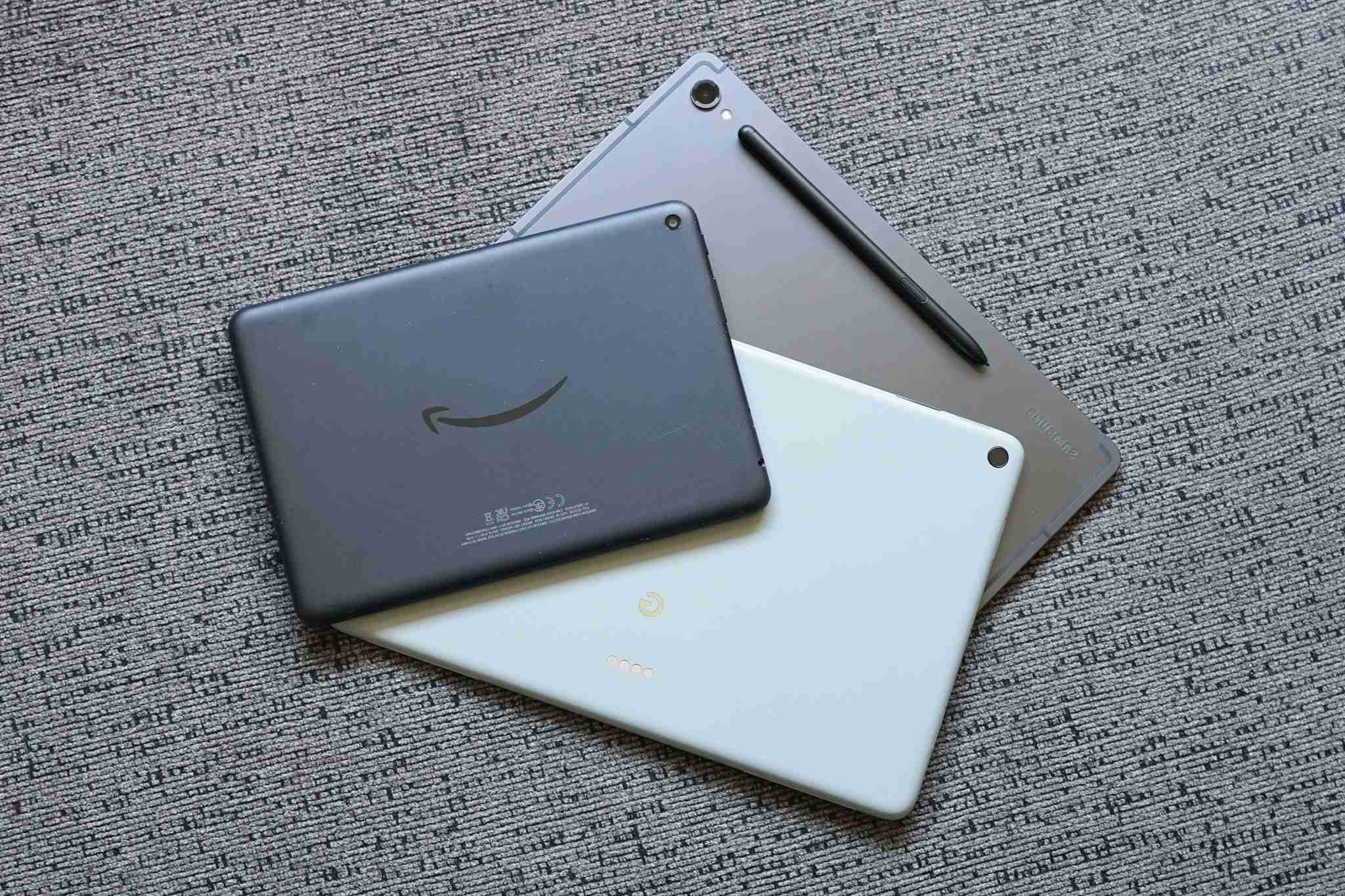
Samsung Galaxy Tab A9+
Key Features
- Performance: Qualcomm Snapdragon 695 processor ensures smooth everyday use.
- Display: 11-inch LCD with 1,920 x 1,200 resolution and 90Hz adaptive refresh rate.
- Storage: Base model starts at 64GB, expandable via microSD.
- Software: Samsung's OneUI with four years of Android updates.
- Design: Modern, sleek design with Samsung Dex support.
Pros
- Reliable performance for daily tasks.
- High-resolution display with adaptive refresh rate.
- Expandable storage.
- Long-term software support.
- Stylish design with PC-like functionality.
Cons
- No fingerprint sensor.
- Battery life could be better with heavy usage.
Xiaomi Redmi Pad Pro
Key Features
- Performance: Mid-range processor for efficient task handling.
- Display: 11-inch screen with vibrant colors.
- Design: Sleek and lightweight for portability.
- Battery Life: Long-lasting battery for daily activities.
Pros
- Good performance for streaming and browsing.
- High-resolution display.
- Portable and lightweight.
- Impressive battery life.
Cons
- Limited software updates.
- No S Pen support.
Amazon Fire HD 10 (2023)
Key Features
- Performance: Suitable for streaming, gaming, and web browsing.
- Display: 10.1-inch screen with vibrant colors.
- Design: Sleek and lightweight.
- Battery Life: Long-lasting battery.
- Sideloading Capability: Access to Google Play Store apps.
Pros
- Great for media consumption.
- High-resolution display.
- Portable design.
- Impressive battery life.
- Sideloading capability for more apps.
Cons
- Limited app selection compared to Google Play Store.
- No clear path for future OS updates.
Lenovo Tab P11 Pro Gen 2
Key Features
- Performance: Mid-range processor for efficient task handling.
- Display: 11-inch screen with vibrant colors.
- Design: Sleek and lightweight.
- Battery Life: Long-lasting battery for daily activities.
Pros
- Good performance for streaming and browsing.
- High-resolution display.
- Portable and lightweight.
- Impressive battery life.
Cons
- Limited software updates.
- No S Pen support.
Blackview Tab 70 Wi-Fi
Key Features
- Performance: Mid-range processor for efficient task handling.
- Display: 10.1-inch screen with vibrant colors.
- Design: Sleek and lightweight.
- Battery Life: Long-lasting battery for daily activities.
Pros
- Good performance for streaming and browsing.
- High-resolution display.
- Portable and lightweight.
- Impressive battery life.
Cons
- Limited software updates.
- No S Pen support.
Choosing the Right Tablet for You
Factors to Consider
- Operating System: Android offers a wide range of apps and customization options.
- Performance: Look for mid-range processors and sufficient RAM.
- Display: High-resolution screens with at least 1080p resolution.
- Storage: Expandable storage options via microSD cards.
- Battery Life: Aim for at least 8 hours on a single charge.
- Software Updates: Regular updates for security and new features.
- Design and Build Quality: Sleek and lightweight for portability.
- Additional Features: Consider stylus support, fingerprint sensors, and other extras.
Affordable Android tablets now offer impressive performance, sleek designs, and competitive pricing. Whether streaming shows, browsing the web, or working, there's an affordable option available. By considering factors like operating system, performance, display, storage, battery life, software updates, design, and additional features, you can find the perfect device that fits your needs and budget.
The Samsung Galaxy Tab A9+, Xiaomi Redmi Pad Pro, Amazon Fire HD 10 (2023), Lenovo Tab P11 Pro Gen 2, and Blackview Tab 70 Wi-Fi each offer unique features catering to different user needs, from streaming and gaming to productivity and portability. The best affordable Android tablet for you will depend on specific requirements and preferences. By researching and considering these factors, you'll find a reliable and feature-rich device that fits your budget without compromising on performance or functionality.
